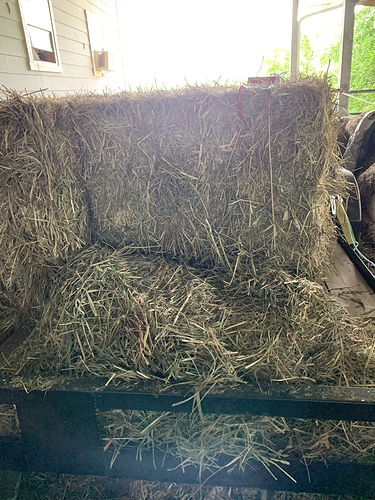Foggybok and candyappy I was bringing up the wetted hay when well dried, is still a good nutritional option for horses. Might not be perfect looking “Fair competition” or magazine picture pretty, but still good for the horses. Sometime you can’t get “the best hay” so you settle for good hay.
Or the prices are too high for the best stuff. Horses will still do well on “good” hay, aRe energetic, shiny.
Hay is still what I think is high, though nothing compared to Florida prices! Small squares, 40-50#s, are $6 to $8 the bale. Few folks sell by the ton unless they are dealers, most are farmers. This is last year hay, not much lower cost than last year prices! Not many places test hay, plus it cost more. There is very little wait time to go thru testing, then accepting or refusing what is offered. Buy it now or someone else will! Cost goes up if they put it in the barn and then pulled out again.
I shudder to think what 99.5% weed free Timothy would cost!!! Not sure I could afford enough for one horse, not the 9 we feed now!


